Chicago YIMBY continues its Sister Cities series with a look at a recently approved development in nearby Kenosha, Wisconsin. Located just over an hour north right beyond the state-line, the new proposal looks to develop nine blocks of the city’s downtown and won approval from city council earlier this month. Milwaukee-based developer Cobalt Partners, LLC along with C.D. Smith Construction Inc. are behind the project which is being designed by Chicago-based SCB.
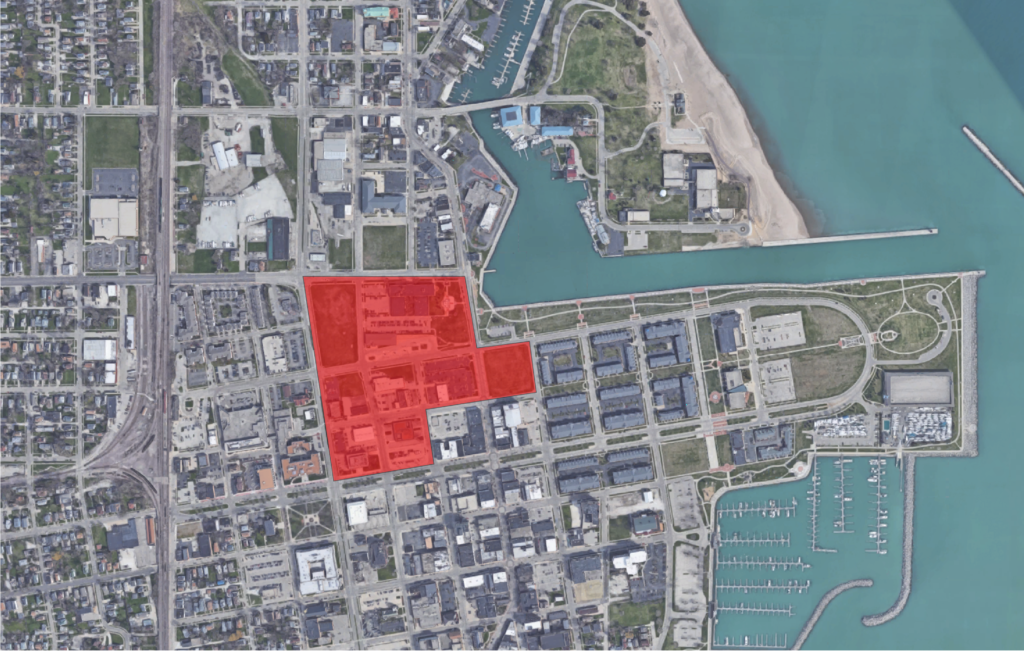
Site context map of downtown Kenosha redevelopment via Google Maps
Comprising nearly 14 acres of land roughly bound by 52nd Street to the north, Sheridan Road to the west, 55th Street to the south, and harbor to the east, the site is currently a combination of empty lots and city-owned buildings. In the last year the city has already demolished three buildings within the boundaries, with plans to remove the remaining five which include the Kenosha municipal building already in motion.
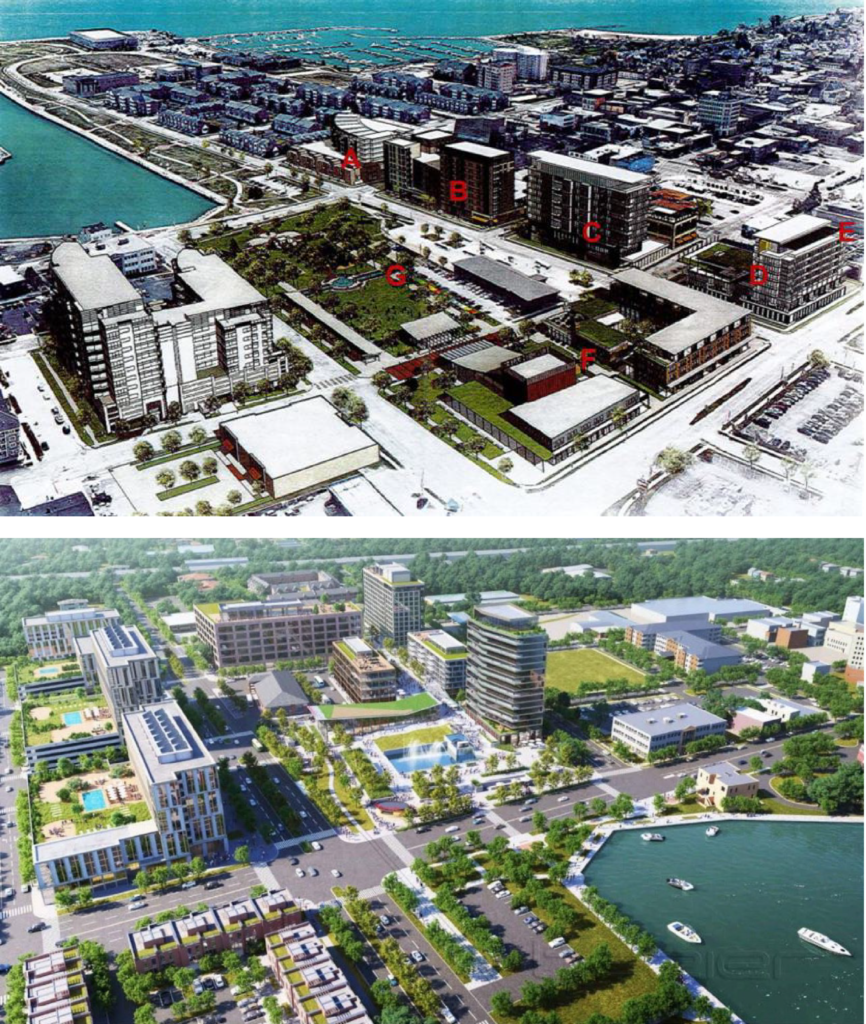
Previous (top) and current (bottom) renderings of downtown Kenosha redevelopment
The city originally called for proposals to redevelop the site in 2019 prior to the increase in work from home, with a prime lakefront location between Chicago and Milwaukee and served by the Metra UP-N line. In the end the city selected the team after multiple rounds of negotiations with other bidders as well, starting with an agreement to develop a new municipal building on site in order to fully free up the space in the longterm.
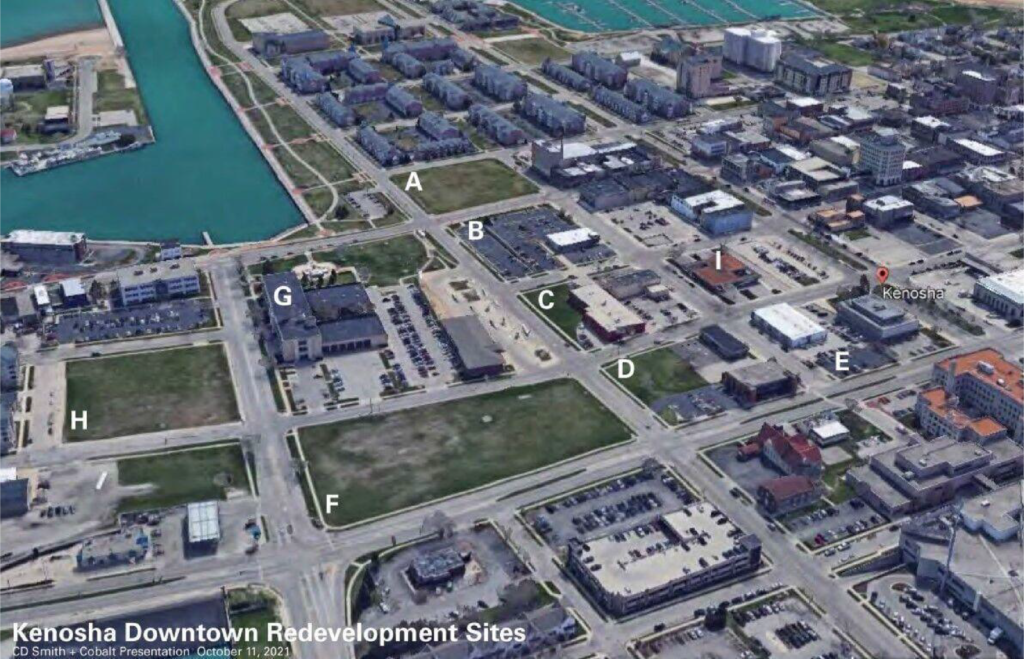
Existing view of separated blocks of downtown Kenosha redevelopment by SCB
With a timeline of seven to ten years for a full build out, the completed product will boast reduced roads through the site, a central park with a large market hall for the local farmers market, several-mid rises and one larger tower. Green space will be the focus of the project with a large display fountain near the lakefront, enlarged sidewalks and greenways with all of the buildings increasing their setbacks, and a connection to the existing harbor park.
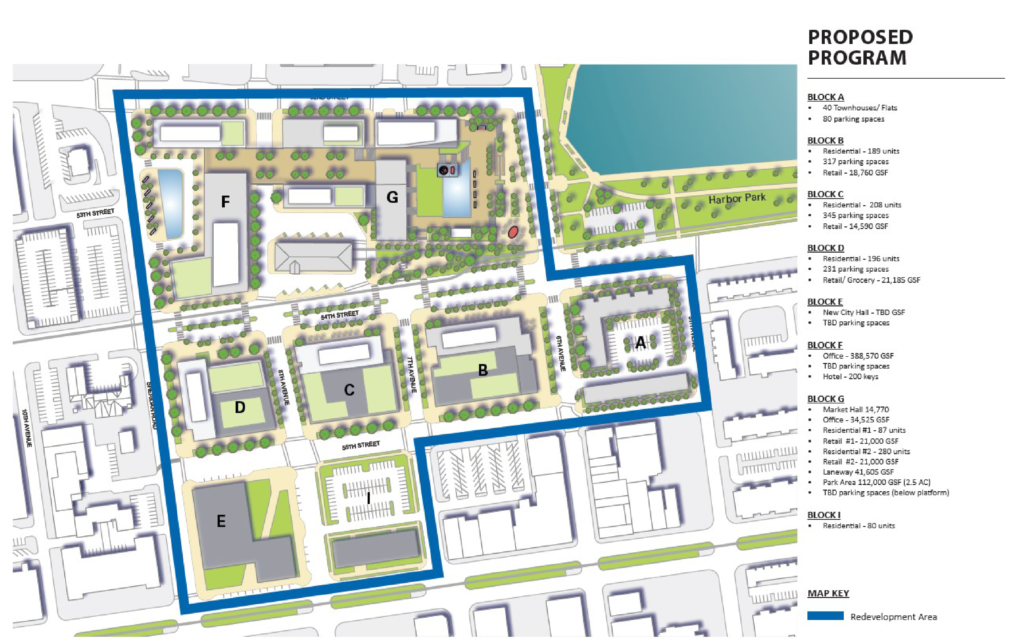
Site plan of downtown Kenosha redevelopment by SCB
Split into multiple blocks of development and built in phases, the completed project calls for 1,080 residential units, over 70,000 square feet of retail space including a grocer, 423,000 square feet of office space, over 1,100 vehicle parking spaces, and a 200-key hotel. While all the designs are placeholders, the tallest tower within the renderings is shown rising nearly 20 stories in height and becoming the city’s tallest.

Rendering of downtown Kenosha redevelopment by SCB
With a rough expected cost of over $450 million, the mixed-use plan will add additional value to the city which is also seeing a $15 million redevelopment of the Chrysler engine factory dating back to 1902 into an innovation neighborhood. Similar to projects in Chicago this would utilize $62 million in Tax Increment Financing (TIF) to help construct the public side of the development, with construction beginning as soon as this fall.
Subscribe to YIMBY’s daily e-mail
Follow YIMBYgram for real-time photo updates
Like YIMBY on Facebook
Follow YIMBY’s Twitter for the latest in YIMBYnews

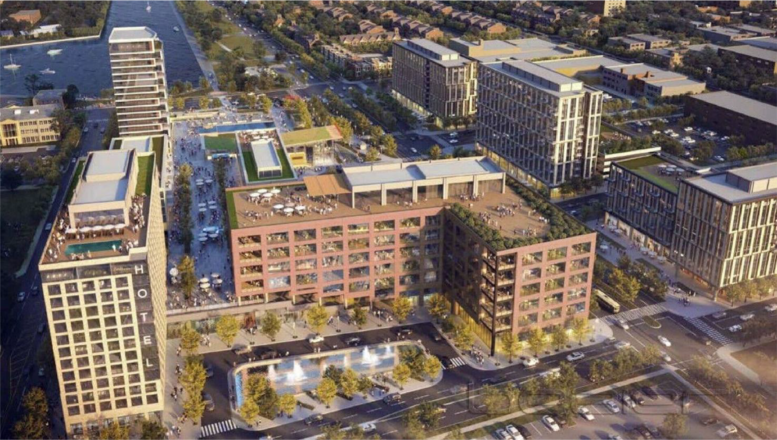
Awesome!
Fantatstic news for Kenosha. I have hated for a long time how disconnected their downtown has been. So much potential in such a beautiful area. The only thing missing is that rail line connecting Chicago to Greenbay with Milwaukee, Kenosha, and others. Little weekend getaway locations without needing to roadtrip… It would be so much fun and convenient.
Kenosha was hit really hard with all the looting. It’ll be nice to see this city build this and hopefully it brings momentum to the whole area.
Great to see revitalization of an already beautiful Great Lakes small city. I’ve always felt like Waukegan could be primed for something like this as well. Both were hit hard by industrial decline but have a lot of potential.